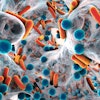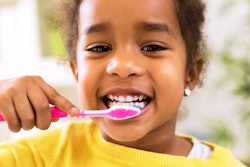
In a study of more than 20,000 people in Japan, those who changed the time and frequency of their toothbrushing routine were more likely to have the three main symptoms of COVID-19, according to a study published recently in the International Dental Journal.
Previous research has stressed that the oral cavity is an important site for SARS-CoV-2 viral replication, and saliva may be a potential route of transmission. However, studies analyzing the association between oral hygiene and COVID-19 infections are scarce.
The study, which is reportedly the first epidemiological study to examine the association between changes in toothbrushing habits and COVID-19 symptoms, suggests there may be a microbial pathway directing the link between toothbrushing and COVID-19 infections (Int Dent J, August 4, 2022).
Using data from the Japan COVID-19 and Society Internet Survey, which was conducted between August and September 2020, researchers calculated the odds ratio of having the three main COVID-19 symptoms: high fever, cough, and taste and smell disorder.
| Association between toothbrushing habits and the three main COVID-19 symptoms | |||
| Decreased toothbrushing | Increased toothbrushing | Unchanged toothbrushing | |
| Odds after full adjustment | 3.83 | 4.19 | Reference |
| Odds after adjusting for age, sex, and socioeconomic status | 5.13 | 4.52 | Reference |
| Odds after adjusting for age and sex | 5.48 | 4.56 | Reference |
| Odds with no adjustment | 8.65 | 5.20 | Reference |
Of the 22,366 people who participated in the survey, symptoms of COVID-19 were highest among those who reduced the amount of time they spent brushing their teeth and those who brushed their teeth less often. Other groups more likely to experience COVID-19 symptoms included men, those in the youngest age group, people with high educational attainment, those in the lowest income bracket, people with poorly rated health, and people who continued to go outside unnecessarily.
Interestingly, those who increased their toothbrushing habits also had higher odds of having the three COVID-19 symptoms. However, the odds were still lower than those who decreased their toothbrushing in almost all analysis models.
Toothbrushing patterns are generally known to be a lifestyle habit that does not change much. However, about 12% of participants changed their habits in the studied time frame.
The findings indicate that decreased toothbrushing is associated with prolonged viral shedding of SARS-CoV-2. Researchers speculate that the disruption of equilibrium in the oral microbiome may explain the association between the decrease in the time and the frequency of toothbrushing and experiencing the three main COVID-19 symptoms. The reverse causation may explain the association between the increase in the time and frequency of toothbrushing and experiencing the three main COVID-19 symptoms.
It is possible that those who decreased the time and the frequency of toothbrushing may not have benefited from the mechanical cleansing effect of toothbrushing and the antiviral effect of toothpaste and therefore had a higher SARS-CoV-2 viral load intraorally. This may have led to an increased chance of having the three main COVID-19 symptoms. On the other hand, it is possible that participants became more health conscious once they were diagnosed with COVID-19 and began brushing their teeth more frequently as a protective mechanism.
"This epidemiological study raises the argument that there might be a microbial pathway for the association between toothbrushing and COVID-19 infections," wrote the study authors, led by Dr. Hazem Abbas of Tohoku University in Sendai, Japan. "Also, it suggests that maintaining toothbrushing habits at an appropriate time and frequency ... might have a possible protective mechanism against COVID-19 infections."



















